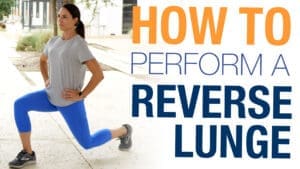Each year, people flock to Williamsport, Pennsylvania to witness teams from all around the world compete in the Little League World Series. The teams train all year to get to this point. Some come from nearby towns, while others come from overseas. Each team, comprised of players age 11 to 13, will play their hardest in order to be earn the title “the best in the world”.
However, because the players’ young bodies are still developing, over exertion on their growing muscles can cause lasting injuries. It’s important for players, parents and coaches to act responsibly and maintain the players’ health and well being as the number one priority.
Little League Shoulder Injuries
Shoulder injuries are common in baseball players, especially pitchers. The torque created with each fastball can stress the muscles, ligaments, and tendons surrounding the shoulder area. Overuse can eventually cause irritation, inflammation, and tendonitis. Sometimes an injury can be so severe that the pain follows the player into adulthood.
In efforts to reduce the opportunities for injuries, the Little League has implemented strict pitch counts. According to the Little League Regular Season Pitching Rules players can only throw a certain number of pitches per day, depending on their age. Players ages 11-12 can only pitch 85 pitches per day. Players age 13-16 can only pitch 95 pitches per day. Also, once a pitcher is taken off of the mound, he may not return as a pitcher for the remainder of the game.
In addition to the pitch limits, there are also rest requirements listed out in the Little League Pitching Rules. Proper recovery and rest is key to injury prevention, especially for growing bodies.
Proper Pitching Form
In addition, to pitch limits and required recovery periods, it’s important for pitchers to use correct form in order to reduce their chances of injury.
Steps for Proper Pitching:
- First, step forward with the foot on your throwing side at a 45-degree angle from the target. For example, if you’re throwing with your right hand, step first with your right foot. By planting your forward foot at an angle, you are setting yourself up to have your hips in line with the target when you throw.
- Next, lift your back foot on your non-throwing side into a balanced position with both feet at a 45-degree angle. Your lifted leg should be the leg closest to the target. Your hands should be at roughly waist height.
- The third step is the forward motion. As you begin to move forward before your front foot touches the ground, your hands should break apart and your throwing arm should go back into throwing position. Aim your glove directly at your target.
- As your front foot hits the ground, your weight should transfer to your landing foot. As your hands separate, your chest should open towards the target in a slight turn. Your glove should pull down, but not past your waist, to create a torque in the torso. As your throwing elbow reaches roughly shoulder height, your hand is now moving towards the target.
- As the ball leaves your hand, your weight should be entirely on your front foot. After the ball has left your hand, your arm should continue across your body and your hand should end up around your planted leg’s knee.
A more in-depth guide to proper pitching form can be found here.
Airrosti Treats Shoulder Injuries
Airrosti knows that athletes young and old don’t like to be sidelined for long. Our manual therapy techniques relieve pain quickly and effectively. By designing custom treatment plans for each patient, we are able to get them back on the field as quickly as possible. Our treatment sessions begin with a thorough assessment of the injury, followed by manual therapy, and finalized with the doctor demonstrating and prescribing at home active rehab exercises. It’s this combination of personalized care and active recovery that allow our patients to recover so quickly.
If you or your young athlete has been suffering from shoulder pain, contact Airrosti today to find a provider near you.
Photo Courtesy: “Little League World Series and Lamade Stadium” by User:Ruhrfisch – via Wikimedia Commons










